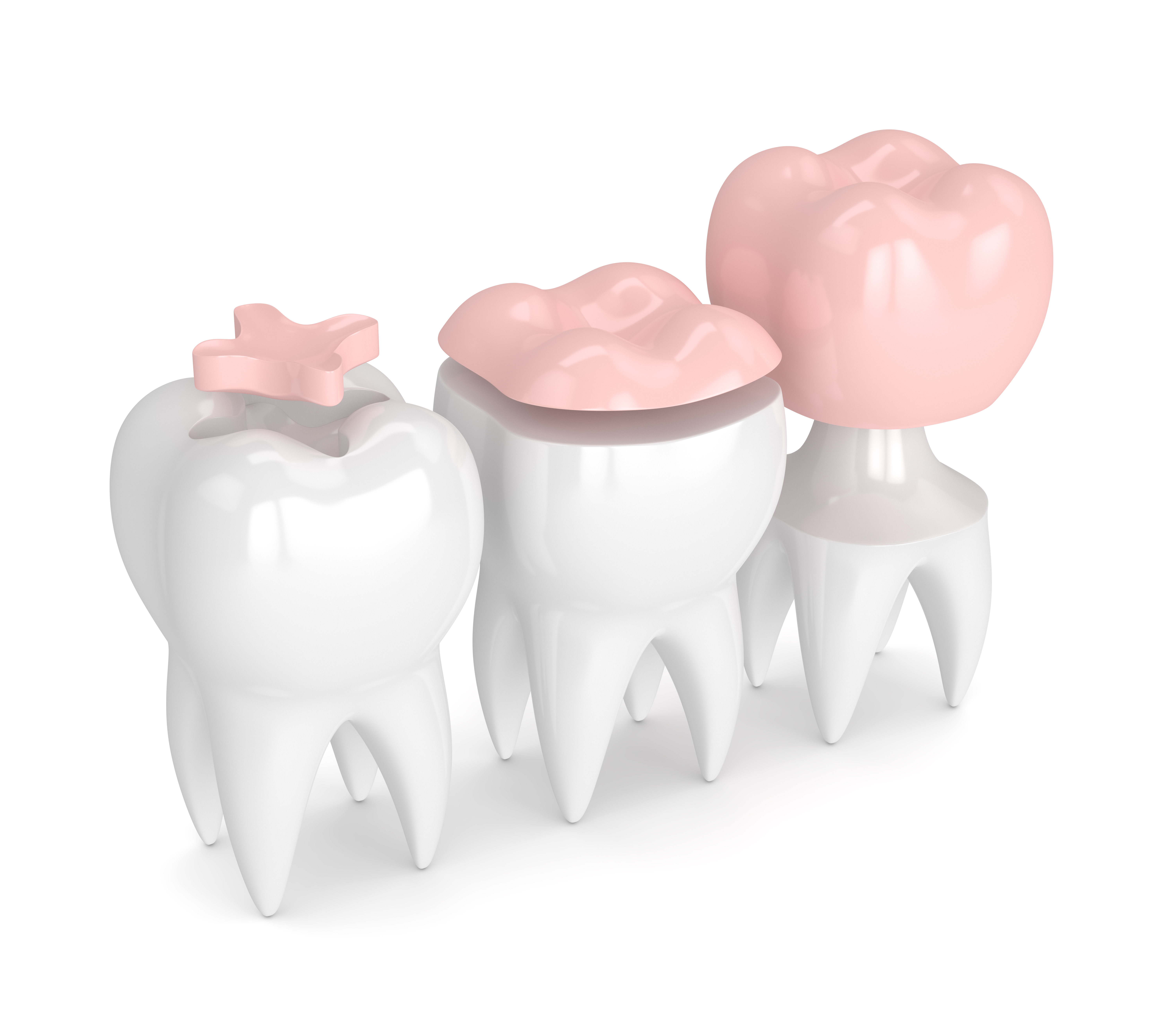Inlay, Onlay and Overlay
About
Inlay, onlay, and overlay are dental restorative treatments used to repair damaged or decayed teeth. Each of these options varies in the extent of restoration and how they are applied.
- Inlay: An inlay is a restoration used to fill damage within a tooth, typically on the chewing surface. It is made from various materials, including metal, ceramics, or porcelain, and is fabricated in a laboratory before being permanently placed on the tooth.
- Onlay: An onlay is similar to an inlay but covers a larger portion of the tooth. It is often used to restore teeth with more extensive damage or decay, including the chewing surface and parts of the tooth's sides.
- Overlay: An overlay is the most extensive of these options and is used to restore the entire tooth crown. This includes covering all surfaces of the tooth and is often used for teeth with severe damage or to restore aesthetics and functionality.

Candidate
Candidates for these treatments typically include individuals with damaged or decayed teeth that are not so severely damaged as to require crowns. Candidates should also have sufficient healthy tooth structure to support the placement of inlays, onlays, or overlays.
Preparation
Preparation for the treatment usually involves a consultation with a dentist to assess the need for restoration and the selection of materials for the inlay, onlay, or overlay. During preparation, X-rays of the teeth may be taken to precisely determine the nature of the damage.
Treatment
The actual treatment looks like this: 1. Tooth Preparation: First, the dentist prepares the tooth by removing damage and shaping it to accept the inlay, onlay, or overlay. 2. Impression: After tooth preparation, an impression is taken to create a model for making the restoration in a laboratory. 3. Placement of a Temporary Restoration: While the permanent inlay, onlay, or overlay is being fabricated, a temporary version is often placed to protect the prepared tooth. 4. Placement of the Permanent Restoration: Once the permanent restoration is ready, it is placed on the prepared tooth.
Result
The results of these treatments typically include restored teeth that look and function better, and patients will notice improvements in appearance and chewing. Restorations can be made to match the color and shape of other teeth.
Precautions
Precautions after the placement of inlays, onlays, or overlays include regular oral hygiene, following the dentist's instructions, and regular dental check-ups to preserve the long-term health of the restored teeth.
ZagrebMed patient reviews
F.A.Q.
From ceramics.
Prosthetic fillings are always better than classic fillings because the material they are made of is stronger, lasts longer and looks nicer.
No.
As long as the filling holds up well, it does not need to be changed. A clinic gives a 5-year guarantee on prosthetic fillings. We expect that after some time, tooth damage will occur because the person and its structures change over time, so the filling will have to be changed as well. There is enough individual duration, so the state of filling can be monitored on the controls.
No.
Yes.
Inlays, onlays, and overlays are types of dental restorations used to repair damaged or decayed teeth.
An inlay is used to repair a tooth when the damage or decay is limited to the chewing surface, while an onlay is used when the damage extends to the cusps or edges of the tooth.
With proper care and regular dental visits, inlays, onlays, and overlays can last for many years, even decades.
Inlays, onlays, and overlays are made from durable and stain-resistant materials. However, it is important to avoid consuming excessive amounts of staining substances, such as coffee or tobacco, to prevent discoloration.

Send an inquiry for the treatment
Start your way towards a successful treatment today. Fill out the form with your data, choose the service you need and we will connect you with the top medical experts in Zagreb.